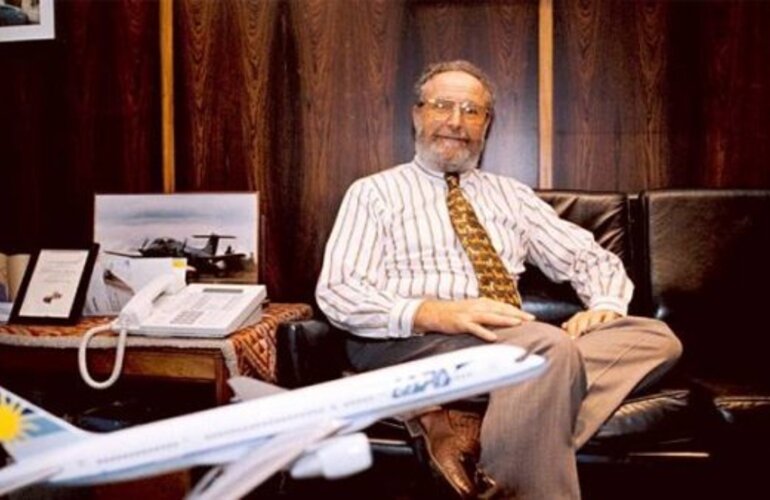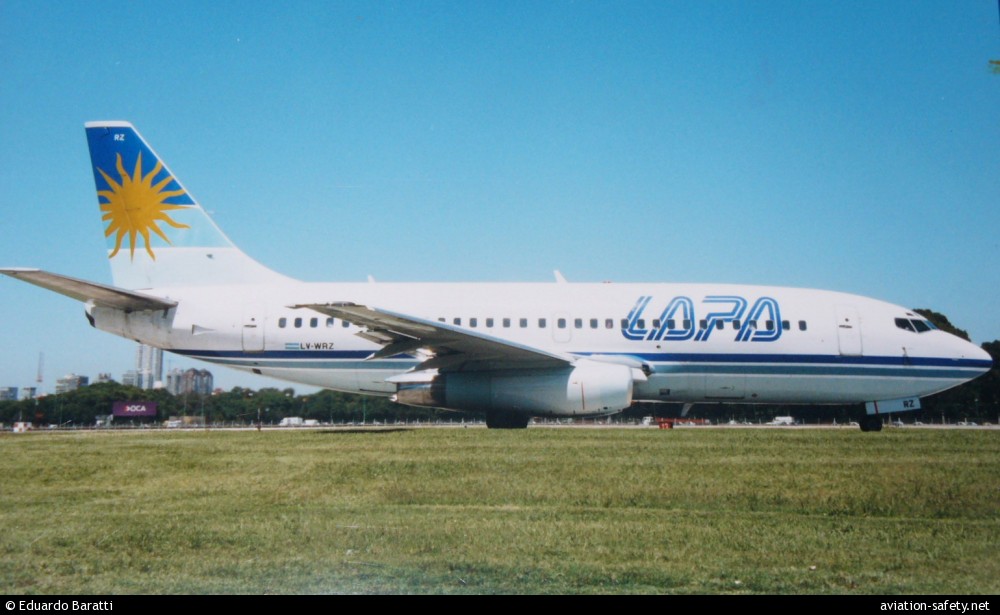RIO DE JANEIRO, BRAZIL – At 8:54 PM on Tuesday, August 31, 1999, a jet airplane went off the runway, knocked down a fence, crossed an avenue, hit a car, dragged a gas regulation chamber, braked on a sandy runway of a golf course and burst into flames.
On Sunday, September 14, 2014, at 3:16 PM, a light aircraft crashed into a residential area, hit a house, and damaged other buildings when it exploded. Just over fifteen years (exactly 5,493 days) passed between one accident and the next. There is a common thread that connects them: Gustavo Andrés Deutsch.

“Andy” was born on October 19, 1935, in Prague, the capital of what was then Czechoslovakia. He was ten years old when his family decided to emigrate to Argentina in search of post-war prosperity.
Their father Frederick had founded the supermarket chain Te-ta, which means “aunt” in Czech. “In my country, there was an old custom: if something was missing from the house, people would advise, ‘go ask your aunt for it,'” he later explained in several interviews.
In Argentina, they continued the tradition: In partnership with the Steuer family, they founded the renowned distribution company “Tía S.A.” He was twenty years old when he emigrated from the country after the attempted kidnapping of a company director.
In the United States, where he stayed for eight years, he graduated as a chemical engineer from the Massachusetts Institute of Technology (MIT). He intensified his passion for aviation, graduated as a pilot, and returned to Argentina to buy the company Líneas Aéreas Privadas Argentinas (LAPA) in exchange for some of his family’s land.

In 1984, LAPA had only two 30-seat Saab aircraft, serving the route to Colonia in Uruguay. In just four years, it offered regular flights to ten inland cities and to Punta del Este in Uruguay. It had broken the monopolistic domination of Aerolíneas Argentinas and its subsidiary Líneas Aéreas Austral with a winning formula: low fares and personalized management.
It was the third national airline to control more than 30% of the local air transport market from both Aeroparque and Ezeiza airports in Buenos Aires. His philosophy and projection gave rise to the comparison that he himself nurtured: He prided himself on being “the Argentine Saint-Exupéry.”
Deutsch, the father of four children, received the Konex Platinum Award in 1998 for his entrepreneurial activities. Early the following year, LAPA launched direct flights to Atlanta, USA, with a Boeing 767-300ER.
But in 1999, came the ultimate paradox: the year of the boom was also the year of the collapse. On the night of Tuesday, August 31, the Boeing 737-204C with registration LV-WRZ, LAPA flight #3142 to Córdoba, never took off from Aeroparque Jorge Newbery. It had 100 people on board when it crashed: 63 died.
When the plane caught fire on the embankment of a landfill overlooking the Río de la Plata, Deutsch was having dinner with his wife, Graciela Villarruel, at a friend’s house. When he heard the news, his first call was to Ronnie Boyd, his closest confidant, who was in Europe negotiating the company’s insurance.
His second impulse was to set up a temporary office in the LAPA hangar. His first public statement was, “I’m not denying anything, I’m just saying I don’t know what happened.”

This was the largest aviation disaster in the history of commercial aviation on Argentine soil (after the crash of Austral’s DC-9 in Fray Bentos, Uruguay, with 74 deaths). The aircraft failed to lift off from runway 13: There was human error and a chain of negligence that exposed a web of corruption and inadequacies.
One maneuver sealed the Boeing’s fate: the commander, Gustavo Weigel, and the co-pilot, Luis Etcheverry, did not extend the flaps – indispensable instruments on the wings to provide flight, lift and relief – even though an alarm warned them for 52 seconds. “I don’t know what’s going on, but it’s all good,” Weigel said just before impact.
A 35-meter-long plane was taxiing rudderless down a short runway. It was traveling at 200 kilometers per hour, not toward the province of Córdoba, but toward Avenida Costanera Norte. It flew over, enveloped by sparks from the fuselage, a car, road machinery, an embankment, and a gas regulation plant.
The last impact caused a fire due to fuel and gas leakage. The tragic outcome: 34 injured and 63 crew members killed, including the pilot, co-pilot, first officer Veronica Tantos, and sixty passengers and two people traveling in a Chrysler Neon on the road. The Costa Salguero Golf Course, Driving Range, was the scene of the tragedy.
On July 5, 2005, Judge Sergio Torres ordered that nine defendants be tried: six company executives, including Deutsch, for negligent destruction, and three Air Force personnel for violation of the duties of a public official.
Five years later, on Feb. 2, 2010, the 4th Chamber Court, composed of Judges Leopoldo Bruglia, María Cristina San Martino, and Jorge Luciano Gorini, acquitted the vast majority of the defendants, including Deutsch.
The only ones convicted were Valerio Francisco Diehl, former operations manager of LAPA, and Gabriel María Borsani, former manager of Line 737, with a sentence of three years for the offense of serious negligence.
The Supreme Court declared the sentence-final in September 2012. The court had concluded that responsibility for the accident lay solely with the pilot and that the president of LAPA “was not in a position to intervene in the decision to promote the pilot to the commander.”

In February 2014, the acquitted executives were acquitted by Chamber IV of the Federal Criminal Chamber. And on August 29 of the same year, two days before the fifteenth anniversary of the accident, the Supreme Court confirmed what the same Chamber had already decided on February 11: the annulment of the two convictions on the grounds of the statute of limitations. Dielh and Borsani were not to serve their sentences.
LAPA no longer existed at that time. On April 20, 2003, the airline filed for bankruptcy. It had already existed for 26 years. Tragedy had decided its fate: its reputation undermined its earning power. No one wanted to travel on a LAPA plane anymore.
Gustavo Andrés Deutsch remained connected to aviation as a businessman and as a pilot. Years later, he founded the air taxi company Tango Jet. He was also president of Industria Textil Argentina (INTA), the main manufacturer of fabric for overalls.
He was a man of power. He had named a Boeing 737 of his former airline “Anillaco” in a gesture of camaraderie with former President Carlos Menem. In 2006, the national government under Néstor Kirchner contracted his company to carry out transfers. He flew the then President and First Lady, Cristina Kirchner, to Bahía Blanca and Río Gallegos.
Deutsch died the same year he was acquitted of the LAPA disaster, after taking off from his ranch La Nueva in Junín province at three in the afternoon on Sunday, September 14.
It was to be a forty-minute flight. He intended to land his Beechcraft 300 Super King Air at the Jorge Newbery airfield at 3:20 PM. He was traveling with his wife. He was 78 years old – he would be 79 in a month – and disoriented.
“Andy, you’re lost, you’re off axis, do you want me to guide you?” he was asked from the Aeroparque control tower. “No, thank you. I’m blocking it, I can find it,” he replied. The plane crashed. It crashed into an unoccupied house in the private neighborhood of La Isla in North Delta. Gustavo Andrés Deutsch, the self-proclaimed “Argentine St. Exupéry”, a former owner of aviation company LAPA, died in a plane.


